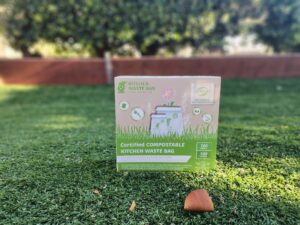Burning organic waste is often considered a convenient method of disposal, particularly in areas lacking proper waste management infrastructure. However, this practice contributes significantly to environmental pollution and has severe implications for human health, ecosystems, and the global climate. Understanding the dangers of burning organic waste is crucial for promoting sustainable alternatives and protecting the environment.
The Composition of Organic Waste
Organic waste includes materials derived from living organisms, such as food scraps, yard waste, agricultural residues, and other biodegradable items. These materials, when left to decompose naturally, break down into harmless substances like carbon dioxide, water, and organic matter that can enrich the soil. However, when organic waste is burned, the decomposition process is bypassed, leading to the release of harmful pollutants.
Pollutants Released from Burning Organic Waste
When organic waste is burned, it releases a complex mixture of pollutants, including:
- Particulate Matter (PM): Burning organic materials releases fine particles into the air, known as particulate matter. These particles, especially PM2.5 (particles smaller than 2.5 micrometers), can penetrate deep into the lungs and enter the bloodstream, leading to respiratory and cardiovascular diseases.
- Carbon Monoxide (CO): Incomplete combustion of organic waste produces carbon monoxide, a colorless, odorless gas that can be deadly at high concentrations. Even at lower levels, exposure to carbon monoxide can cause headaches, dizziness, and impaired cognitive function.
- Volatile Organic Compounds (VOCs): Burning organic waste releases volatile organic compounds, which can contribute to the formation of ground-level ozone, a harmful air pollutant that causes respiratory problems and exacerbates conditions like asthma.
- Greenhouse Gases (GHGs): One of the most significant environmental impacts of burning organic waste is the release of greenhouse gases, primarily carbon dioxide (CO2) and methane (CH4). These gases contribute to global warming and climate change, exacerbating the effects of extreme weather events, rising sea levels, and shifting ecosystems.
- Dioxins and Furans: These are highly toxic compounds that can be produced when organic materials containing chlorine are burned. Dioxins and furans can accumulate in the food chain, leading to long-term health effects such as cancer, reproductive and developmental problems, and immune system damage.
Health Impacts of Organic Waste Burning
The pollutants released from burning organic waste pose significant health risks to both those directly involved in the burning process and the broader community. Short-term exposure to the smoke and fumes can cause eye irritation, coughing, and shortness of breath. Long-term exposure, particularly to fine particulate matter and dioxins, increases the risk of chronic respiratory diseases, heart disease, and cancer.
Vulnerable populations, such as children, the elderly, and individuals with pre-existing health conditions, are particularly at risk from the harmful effects of air pollution caused by burning organic waste. Additionally, communities living near areas where organic waste is frequently burned may experience a higher incidence of these health problems, contributing to environmental injustice.
Environmental Consequences
The environmental impacts of burning organic waste extend beyond air pollution. The ash residue left after burning can contaminate soil and water sources, affecting plant growth and aquatic life. Moreover, the loss of organic matter that could have been composted and returned to the soil as nutrients leads to soil degradation, reducing agricultural productivity and increasing the need for chemical fertilizers.
Sustainable Alternatives
To mitigate the harmful effects of burning organic waste, sustainable alternatives must be promoted. Composting is one of the most effective methods for managing organic waste. It allows for the natural decomposition of organic materials, returning valuable nutrients to the soil and reducing the need for chemical fertilizers. Anaerobic digestion is another option, where organic waste is broken down in the absence of oxygen, producing biogas that can be used as a renewable energy source.
Implementing proper waste management systems, educating the public about the dangers of burning organic waste, and encouraging the adoption of sustainable practices are essential steps in reducing pollution and protecting public health and the environment.
Conclusion
Burning organic waste may seem like a quick solution to waste disposal, but the long-term consequences are far more detrimental than many realize. By understanding the pollution it causes and adopting sustainable alternatives, we can work towards a cleaner, healthier, and more sustainable future.






